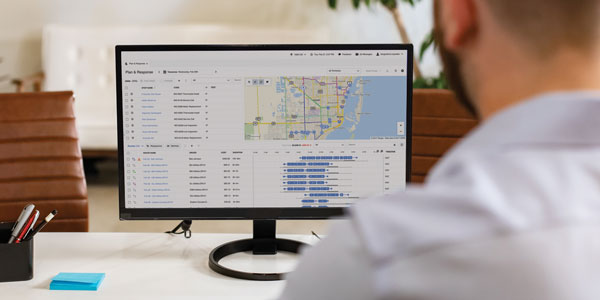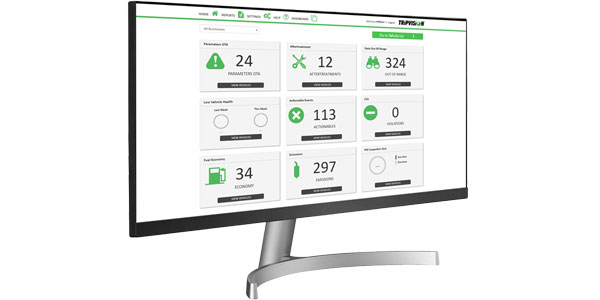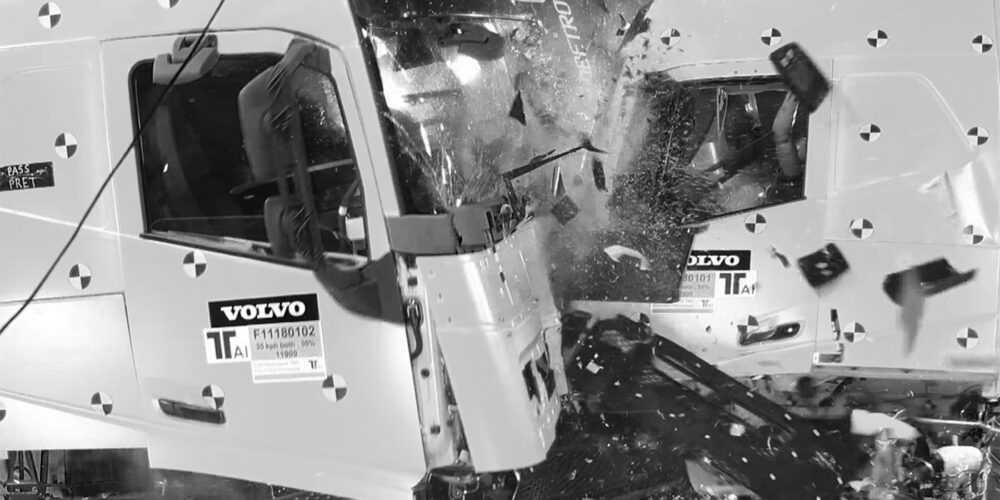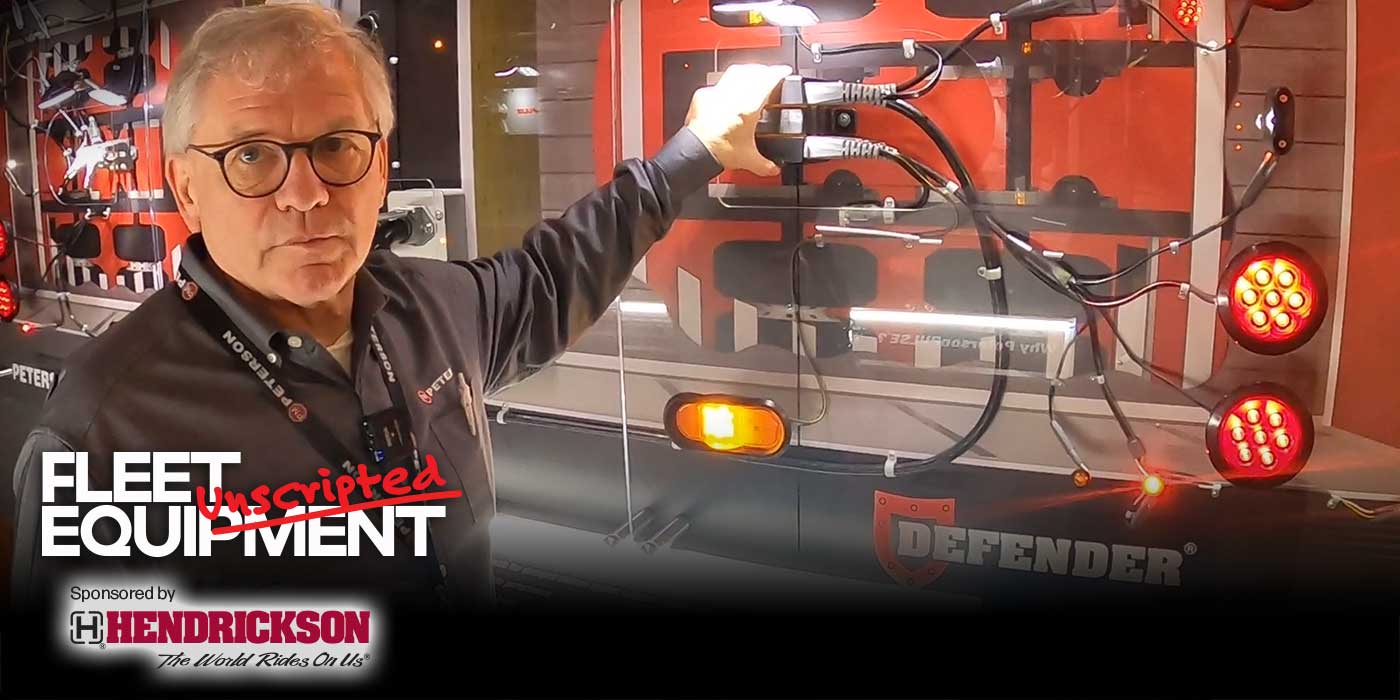
With hundreds, even thousands of trucks to manage on the road, and real-time updates coming in from each of these trucks, a fleet manager may feel like he or she is drowning in data. A well-designed telematics dashboard can serve as a fleet manager’s lifeboat when it comes to managing all this information.
“It is one thing to capture data, but it is another to have a platform where a user can easily consume information and take action in near-real time,” shares Amin Amini, managing partner of solutions engineering at Verizon Connect.
“Telematics tracks a variety of data points, but the raw data can be overwhelming to process and draw out insights for the business and the fleet. A dashboard with strong analytics can save a fleet manager time. Instead of sorting through raw information, a dashboard processes the data and visualizes it, helping a user make quicker decisions, forecasts and respond rapidly when needed,” he continues.
Glenn Williams, vice president of product management for Trimble’s transportation division, agrees.
“Systems today collect a ton of data from multiple sources. Data is data until action is taken, and it’s not as simple as running a report. Data analytics and dashboards increase efficiencies and highlight exceptions and where action needs to be taken to drive business decisions,” he says. “That’s where dashboards take it to the next level.”
Choosing the data to focus on
While ELD requirements may have spiked a fleet’s interest in collecting data digitally, using telematics data can be beneficial to all fleets if properly analyzed. This is where a dashboard can help. It starts by picking which data and information to focus on.
“Options for managing your telematics data will vary based on the telematics provider you partner with. Consider the telematics provider to be like a cell phone manufacturer, and the services you use to be like apps that are designed both internally and externally. It is up to the fleet to decide which services to populate their dashboard with, including apps like weather, load management, remote diagnostics, and more,” shares Terrah Stephens, product manager at Noregon.
At the very basic level, fleets should be capturing GPS locations of vehicles, speed and accelerometer readings, engine hours, odometer readings, vehicle histories and more detailed information such as engine diagnostic data.
“For a fleet to truly maximize ROI, they should be collecting rich engine diagnostic data from the vehicle. There are thousands of engine diagnostic data points including everything from ambient air temperature to RPM and cranking voltage. This data provides a fleet with the requisite indicators for a vehicle’s health which can then be translated into value for the fleet,” explains Mike Branch, vice president of data and analytics at Geotab. “For example, by leveraging cranking voltage and ambient air temperature, predictive models can be created to identify vehicles that will have a battery failure, thereby reducing downtime while on the road.”
Branch also advises collecting data based on the industries and conditions within which a fleet operates.
“For example, for winter operations, data from your snow plow should be pushed through your telematics system to collect data on volume of sand/salt being spread, plow up/down status, etc. If you’re a municipality with an environmental stewardship mandate, you might consider equipping air quality sensors to your telematics device to measure hyper local air quality in near-real time. This data can and should be funneled through a single gateway to maximize asset utilization and provide added ROI in an organic way that makes use of vehicles as sensors on wheels,” he says.

What to do with your data
Once a fleet decides which information to focus on, it’s time to put that data into action. Some different ways fleets can utilize dashboards include driver management, maintenance and even insurance negotiations.
Verizon’s Amini gives an example: “One way to utilize the telematics data tracked in fleet management software is in tracking safety KPIs and results. These data points can help fleet managers negotiate reduced insurance rates. Fleet managers can also view the historical wear and tear on vehicles and make the call when a vehicle needs maintenance, rather than when a vehicle breaks down and causes job and resource reassignments.”
Fleets may also use dashboard information to manage by exception.
“If the dashboard is designed correctly, it will be able to pull out the important pieces of data that a fleet manager needs to be concerned about and allow him/her to manage the fleet by exception. For instance, as a fleet manager, I don’t need a dashboard that shows me fuel consumption across all my vehicles, I need the dashboard to show me the outliers and give me the ability to drill down into why their consumption is so high. This method of outlier detection should be applied across the board for all metrics whether safety, productivity or predictive maintenance,” Geotab’s Branch says.
Another way dashboards can be used ist to help with compliance.
“The industry is targeting the Dec. 16 date for ELD compliance, but how do you manage compliance afterwards? The first step is to ensure that your organization understands how the new regulations affect it, and has the tools available for the drivers and back office,” Trimble’s Williams said. “Compliance dashboards optimize Hours of Service utilization and increase dispatching efficiency with real-time availability of hours, both in-cab and back-office. Safety and compliance team members also gain visibility to driver behavior, violations, trends and other performance metrics.”
Safety dashboards measure driver performance and safety in a consumable and actionable format across several metrics including compliance, speed, driver behavior and CSA scores.
Williams notes that while you want quick actionable information from your dashboard, having the ability to drill down into information can assist safety managers in identifying coaching opportunities with individual drivers to reduce the likelihood of future incidents and potential litigation.
What should a dashboard look like?
Everyone Fleet Equipment spoke with about dashboards agrees that key feature should be the ability for fleets to manage different data points quickly and easily.
“When you’re working with dashboards, you want to make sure that they are user-friendly and that they are using data to prescribe actions to help drive business decisions, increase efficiencies and improve overall safety and compliance,” Williams says.
“The dashboard itself should present high-level information from a variety of services to help manage the fleet at a glance. Each service that comprises the dashboard should provide actionable information rather than raw data so the end user can easily make impactful business decisions rather than be confused by data that means very little to the average employee,” Noregon’s Stephens reiterates.
There is no one-size-fits-all solution for every fleet. Each fleet needs to take its needs into consideration when configuring its dashboard.
“The flexibility of the dashboard to be adapted to your own business needs is critical. Fleet managers don’t operate a business in isolation and it’s important for them to bring in data from other areas of the business to create dashboards that can also be served to the board level of the organization. You must also have the capacity to share dashboards with many different constituents in the organization and various levels of permission,” says Geotab’s Branch.
“It truly comes down to the size of your fleet, the maturity of your fleet’s data and analytics program and the type of data you’d like to manage. If you have a large fleet and have a data analyst that wants to run complex analyses over months and years of data, then you’ll need a platform that can both handle and provide you with an interface to allow your analysts to run that data. It should be housed in a way that provides them with the tools to connect to a big data ecosystem, run machine learning models and combine that data with other relevant business data,” he says. “If you’re a smaller fleet and require real-time alerts to be setup, then access to a platform that has APIs to allow for this is critical.”
Verizon’s Amini agrees the dashboard solution should be customizable in order to meet the fleet’s individual KPIs. He suggests looking for functionality beyond showing basic vehicle information.
“A telematics dashboard should be able to show the location of a vehicle in order to optimize business and productivity, but the location of a vehicle or asset is just the tip of the iceberg. A dashboard should include maps of traffic conditions, weather and commercial vehicle routes, so no matter the situation, a fleet manager has one central location to go to and take action,” he says.
“A telematics dashboard should also show history of past jobs, vehicle maintenance and route history. These data points provide fleet managers the ability to monitor vehicle idling and provide driver coaching and counsel. This will help increase productivity of vehicles and can also help to reduce CO2 emissions from idling,” he continues.

On the horizon
Moving forward the access to data is only going to increase across all industries. Within the trucking world, Artificial Intelligence (AI) could come into greater play.
“Encapsulating the results of AI and machine learning models into dashboards is being done already, but doing so in a way that is more ubiquitous across the board is essential to allow telematics dashboards to be more prescriptive in assisting customers. Leveraging AI to automatically generate dashboards and layouts that will suit your respective business needs simply by how you use your fleet will allow fleets to focus on understanding their fleet more intimately without having to spend time setting up complex dashboards,” says Branch.
Verizon’s Amini agrees.
“Artificial intelligence has great potential to change the job of fleet managers—saving them operational and execution time so they can focus on planning, business development and innovation within the community,” he says. “Underpinning this is location data, which is only beginning to show its full potential. For example, as more communities invest in advanced network infrastructure and emergency service agencies connect their vehicles and assets to central dispatches, commercial vehicle telematics data can provide additional data points on road conditions, vehicle idling and much more, for a fuller picture of a community and the citizen experience.”
Trimble’s Williams says that fleets should prioritize four things on their dashbords: scalability, user friendliness, data prioritization, and that it is proven.
“When you’re looking at solutions that are out there, you want to make sure the product will scale,” he adds. “You want to make sure as you grow your organization, as you add vehicles to your fleet, or as you add drivers, that it is going to scale with you. You want to make sure it’s user-friendly. There is a lot of data out there and what we are constantly hearing from our customers is, ‘The data’s great, but you have to consolidate it and you have to make it easy for us to use so we can make business decisions.’ And then prioritize. How do you prioritize the data? We’re giving the fleets ability to go in and use these dashboards to prioritize that data and rank it accordingly. And, finally, you want to make sure you’re working with proven technology.”
When it comes to telematics security can be a major concern. So what do fleets need to think about?
“In general, fleets should always be privy toward cybersecurity attacks on their vehicle. With the rise of IoT and increased connectivity on commercial trucks, there are more potential points of attack than ever,” says Terrah Stephens, product manager at Noregon. “When necessary, information outputted from the vehicle should be limited in who can access it and often times encrypted. When evaluating a telematics provider, be sure to ask their security policies and procedures to make sure your vehicle, and the data it creates, is safeguarded.”
Mike Branch, vice president of data and analytics at Geotab echoes that sentiment.
“Telematics data is especially sensitive due to the geographic nature of the data being collected. It must be treated with a high degree of security and this must be embedded in the telematics device and all downstream software applications,” he says.
Branch advises, however, that many security holes come from shared passwords or not having strong enough passwords.
“Everyone plays a role in securing telematics data, from the vendor all the way through to the fleet manager and driver,” he says.
For more, read our story on Choosing a telematics dashboard partner.














